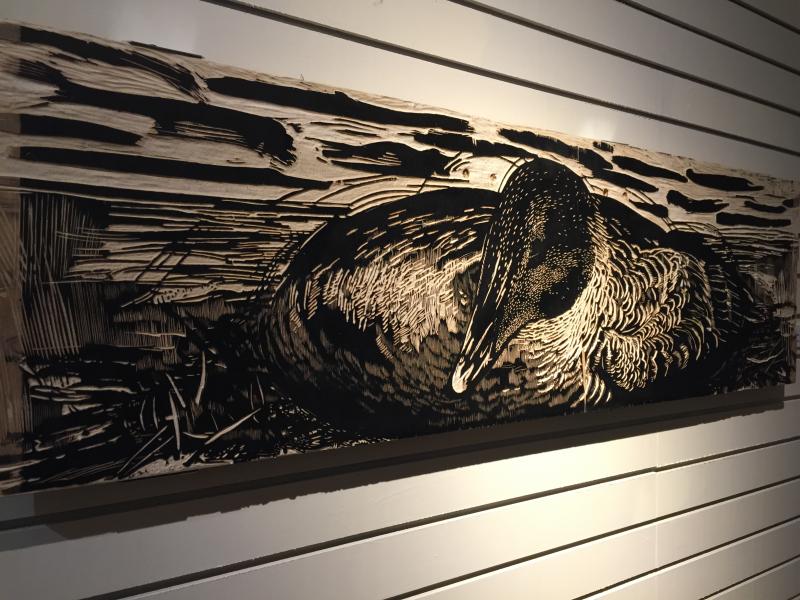His subjects are wild.
He carves, etches, paints, engraves and draws creatures of the wild in a manner that captures their essence, their life force.
He speaks to the interconnection between humans and creatures by sharing his observations of his subjects and of their habitats in various mediums, some centuries old.
This is the world of R. Keith Rendall, and one he shares with the public at his gallery, Rendall Fine Art in Wiscasset.
Rendall's new works bring the viewer into the world of loons, spruce grouse, eider ducks, ptarmigan and redpoles.
Woodblock cut, oils and watercolors on canvases composed of lead, aluminum and stainless steel, Kitakata and Okawara paper, all in custom made frames.
Loons have been a favorite of his since childhood days at camp in the Rangeley Lakes region. Rendall has always found their song haunting.
None of the loons works have ever been shown, although the artist completed them some 15 years ago here in Maine. Rendall was inspired to use them as a subject after seeing them underwater while diving.
“Underwater they have a characteristic about them most people don't get the chance to see,” Rendall said at the March 27 opening reception.
Usually thought of as docile, loons are quite the predators below the water’s surface.
In addition to behavior, Rendall continues to explore his fascination with wildlife and the effects that their changing environments have on them.
In “2 Loons Diving,” the viewer will actually see three loons; but the third is a ghostly white, soaring upward, rather than diving. Is it a visual symbol of the loon's strength of spirit through which it will continue to survive?
Although loons are not on the endangered species or species of concern lists in Maine, the contamination caused by plastics discarded into the water could change that.
Rendall used a creative process for this piece involving two sheets of lead.
“I carved the loons into the lead and pressed them together with my etching press, applied ink and painted them,” Rendall said. “Then I decided to experiment with wax (a medium used in oil painting) and rolled it onto the single lead plate, then pressed the image onto paper. Using a rag, I applied loose, watery ink (containing a large amount of an oil solvent), which the wax repelled.”
Evidence of the effect of the wax is seen in the white areas of the loons' bodies; the ghost or spirit loon is all wax.
“Eider Ducks” depicts a flock of eiders swimming. The birds closest to the foreground are fully realized, and as your eye moves through the flock, you can't help but notice a few birds in the back are losing definition and, behind them, eiders with form alone.
Is this a cautionary visual tale warning of the eradication of the species due to man's pollution?
A series of spruce grouse in oils are fascinating, calling attention to the beauty of these birds. These were created late last summer and autumn.
In “Shearwater,” painted on Kitakata paper, a grouse perched on land that appears to be smiling at the viewer. The sky and water are both a dark blue, with streaks of gray — clouds rolling in perhaps. The scene is one of an evening without moonlight or stars, which is their preferred time atmosphere for breeding. The quality of the paper adds a fragility to the overall image.
Woodcuts by Rendall are as large as his prints, and your instinct is to reach out and touch the piece, feel each cut, then step back and take in the subject. In this show, one of his latest, “Eider Duck on Nest,” hangs near the back of the gallery, and although it is incomplete (Rendall always saves the eyes for last) from the detailing of its feathers to the cat o nine tails, it's a work of beauty that is comforting to look at. It’s comforting both because a female eider is on a nest, and because this one has been crafted by a master.
Rendall observes his subjects personally and seeks to portray their true nature while “in a very subtle way” addressing how precarious their survival in the 21st century is.
“These are beautiful creatures and we should protect them as much as we possibly can.”
Rendall Fine Art is located at 65 Main Street in Wiscasset. For more on the artist, visit www.rkeithrendall.com.































